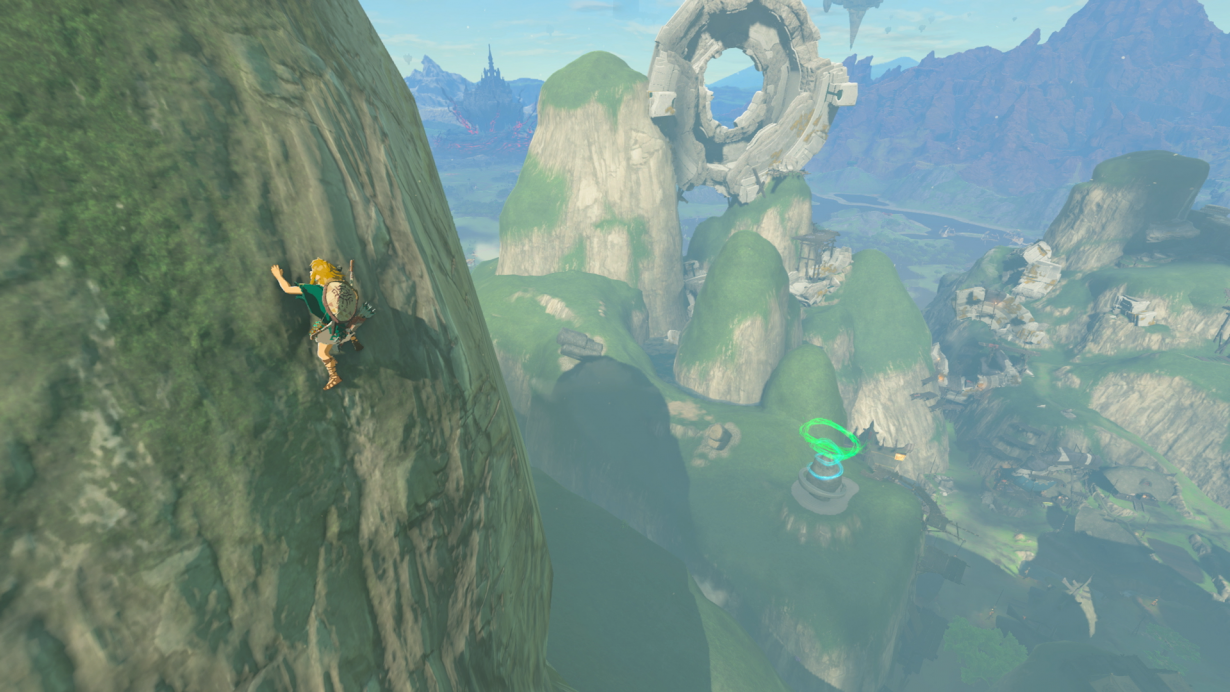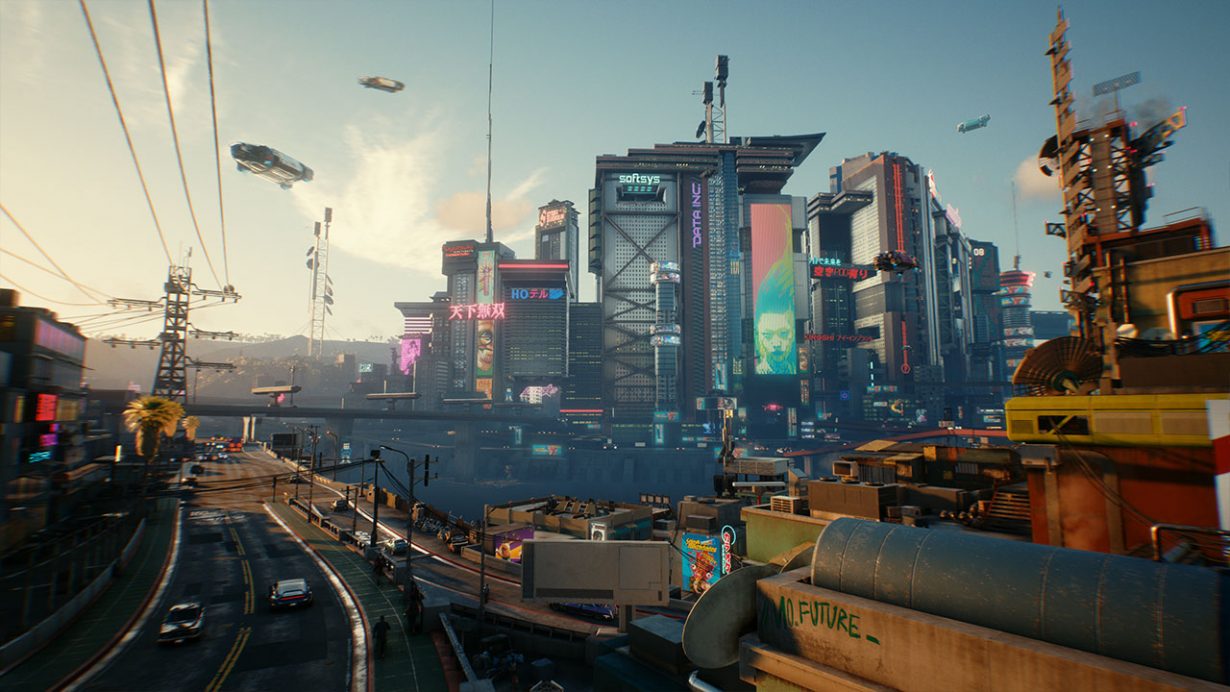Whether the apparent tears in the fabric of this digital reality are authored or accidental, the emancipatory possibilities seem endless
Since The Legend of Zelda: Tears of the Kingdom was released on 12 May, the internet has been awash with videos of players documenting their time in the fantasy realm of Hyrule. Some of these revel in harebrained stupidity, others detail breathtaking feats of skill, but most focus on the ingenuity high-level players have applied to the game’s new construction system. So far, contraptions have emerged ranging from the quotidian (a lawnmower that cuts the game’s exquisitely rendered grass) to the monstrous (this laser-shooting robot war machine). At times, these elements coalesce to create images of the kind that only a video game could muster – say, a mech that waters Hyrule field with its, ahem, water-sprinkling penis.
In closer circles, what’s also been happening is the hunting of glitches. Hundreds, sometimes thousands of players have been congregating on Discord servers to share their discoveries of what most people would consider mistakes in Nintendo’s generally robust code. These include ‘spawning’ glitches (where the player is able to duplicate a seemingly infinite number of items) and ‘damage’ glitches (which cause its protagonist Link’s spin attack to deal an unending series of blows). At the time of writing, one collectively authored document contains 30 known instances of such mysterious technical malfunctions. It’s a safe bet that by the time you’re reading this, countless more will have been found.


In most games, it’s relatively easy to make a distinction between the outcomes high-level players are able to effect with game systems, and the glitches that are achieved outside of this (which, it should be stressed, require no less skill). Yet Tears of the Kingdom and its predecessor, 2017’s Breath of the Wild (two games lauded for their interactive malleability), offer an interesting counterargument. Take, for example, what glitch hunters are calling ‘Recall Launch’, which involves the complicated process of fusing a plank of wood to a weapon, reversing time (stay with me) and then using the momentum to launch Link high into the game’s pristine clouds. Is this a glitch or simply a quirk that emerges when the game’s design is pushed to its outer limits? If it is a genuine ‘mistake’, will Nintendo seek to ‘correct’ it with a patch? It begs a larger question: are the apparent tears in the fabric of this digital reality authored or accidental?
Such questions surface partly because Nintendo has created a space so robust and all-encompassing that it feels as if anything is possible within it. Visually, the game summons lichen-coated stones, sun-dappled shade and sheer mountains. Beneath this painterly hood, it features ‘physics’ and ‘chemistry’ engines that work in tandem to imbue the world with a wonderful sense of tangibility. These engines create emergent gameplay; in other words, spontaneous interactive moments that are often slapstick in their comedy. As such, the glitches which manifest as absurd visual gags seem at one with Hyrule, part of this world’s emotional register. Yet this also creates a strange tension: it can feel as if whatever you do, even glitching the game, you are simply behaving in a way that its design accounts for – as if director Hidemaro Fujibayashi has already conceived of every action you might want to commit.

That said, even when it feels as if the line between glitch and trick is notably thin, these glitch hunters are exploding the latent possibilities within Tears of the Kingdom’s code. For them, glitches are perhaps not so much errors, expressions of machinic anxiety, but closer to what Legacy Russell describes in Glitch Feminism. Writing about the glitch in relation to gender, Russell characterises it as a ‘fissure within which new possibilities of being and becoming manifest’. Such errors, viewed generally as failures of performance, can be emancipatory. You only have to look at how they will be utilised in speedrunning (i.e. the aim of playing video games as fast as possible) to see how, helping the player break free of limits on speed like narrative and combat. In finding such cracks, however tiny they may be, glitch hunters also gently challenge the totality of Nintendo’s ultra-polished entertainment products – the illusion of a seamless hyperreality they ultimately try to sell (and hugely successfully, judging by the 10 million copies sold of Tears of the Kingdom in just three days).

In this context of speed and avatar movement, it’s fitting that the word glitch should derive from German or Yiddish words meaning ‘to slide’ or ‘to slip’. It was subsequently popularised in the 1950s and 60s by employees at NASA, coming to mean ‘a spike or change in voltage in an electrical circuit’. And now in video games and other digital media, glitches tend to produce moments of horror, disruption and incongruence, by virtue of interrupting whatever reality principle has been established. This is partly why the similarly hyped but bug-ridden Cyberpunk 2077 was panned by some critics and players at the time of its 2020 release. Nathan Wainstein, writing in the LA Review of Books, described Cyberpunk’s glitches as ‘bald’ in two distinct ways: ‘in their transparently unintended nature’ and also their ‘surreal puncturing of reality itself’. They broke immersion in a game that was intended to represent the apex of modern graphical prowess. By leaning into stylised, decidedly cartoonish graphics and animations, Nintendo’s game operates according to a different reality principle, one that is ultimately more forgiving.

Tears of the Kingdom’s glitches certainly aren’t game-breaking; they are a benign, unruly presence in the world rather than an existential threat to it. In not only finding glitches, but naming, replicating and exploiting them, glitch hunters are arguably taming these wilder aspects of Nintendo’s code. In this sense, they’re not unlike regular players. Where Breath of the Wild was rooted in the pastoral, Romantic tradition of a lone warrior wandering a mythic landscape, Tears of the Kingdom asks you to mine its natural resources in order to construct machines. The game is partly about mastering such a place, of bringing it under your dominion, thus pulling Zelda into the age of reason.
The glitches in Tears of the Kingdom might be more accurately described as features rather than bugs – less a slip and more a sleight of Fujibayashi’s hand. It’s also hard to imagine saying this of any other game (indeed, Cyberpunk 2077’s grotesque, glitch-ridden images were read by critics as a bleak consequence of its hurried production). In a work of art, ‘there is no single mistake’, Theodor Adorno wrote in Aesthetic Theory (1970), ‘that the true consciousness of the process would not be able to legitimate as correct.’ The ostensible errors in Nintendo’s game may just be that, but they also seem to occupy the sliver of space between happy accident and intended outcome. It speaks to the depth and complexity of the wider simulation, that a glitch can feel part of the magic rather than an unwelcome interruption of it.
